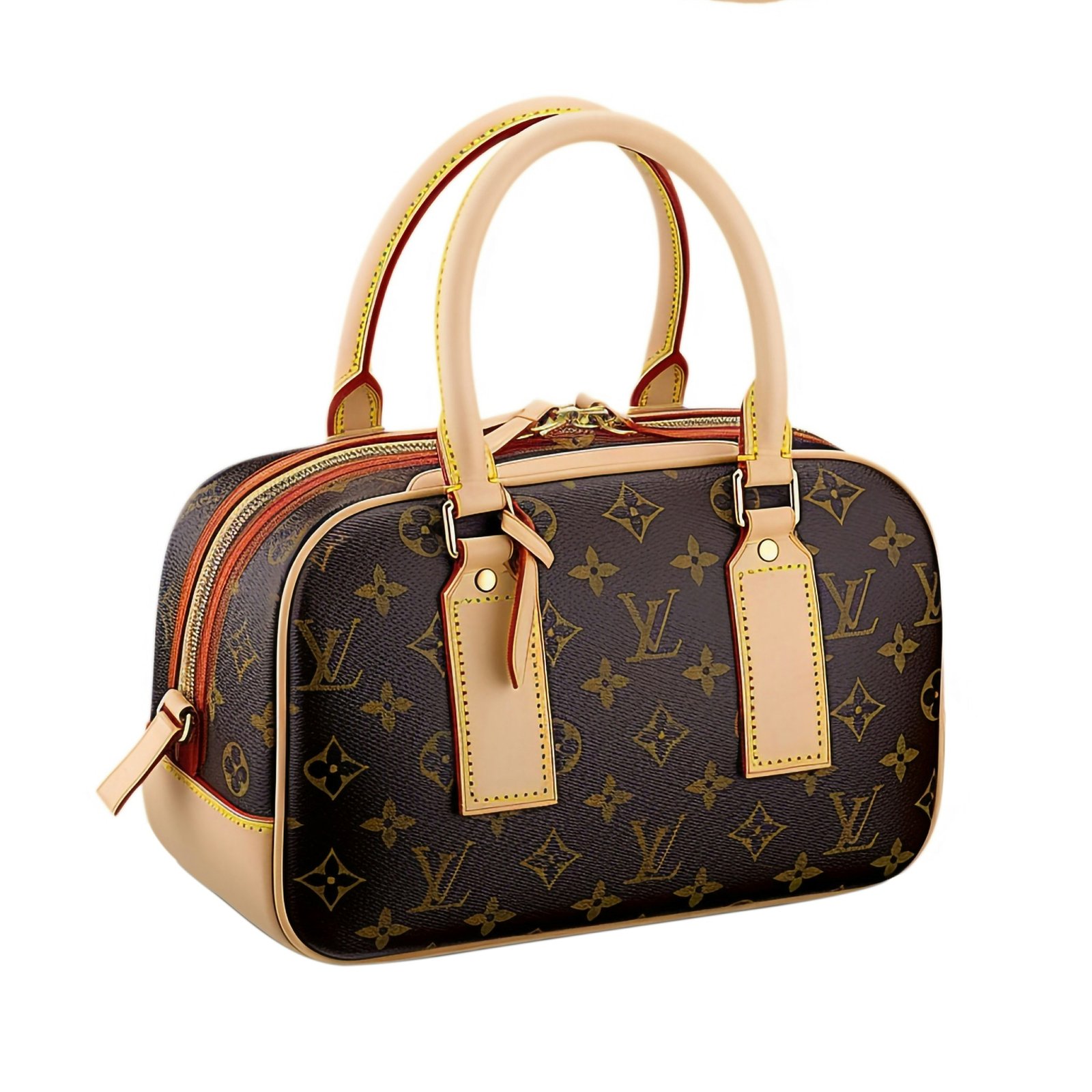Introduction to the Historic Auction
In an unprecedented event within the world of luxury fashion, the original Hermès Birkin bag was sold at auction for a staggering record-breaking price, capturing the attention of fashion enthusiasts and collectors alike. This specific auction not only showcased the allure of high-end accessories but also marked a pivotal moment in fashion history, emphasizing the monumental significance of the Hermès Birkin bag in contemporary culture.
The Hermès Birkin bag, named after the iconic actress and singer Jane Birkin, was first introduced in the 1980s and quickly became synonymous with luxury, craftsmanship, and exclusivity. This particular auction offered a unique opportunity for bidders to acquire a piece of fashion history, igniting a frenzied atmosphere characterized by competitive bidding and palpable excitement. As the auction commenced, bids escalated rapidly, reflecting the high demand and prestige associated with the Birkin brand.
What makes this auction even more extraordinary is the long-standing legacy of the Hermès Birkin bag in the fashion world. Over the decades, it has become a status symbol for many celebrities and affluent individuals, often cited as a must-have accessory in the wardrobes of style icons and influencers. The original bag that was auctioned off not only represents impeccable craftsmanship but also serves as a testament to the enduring desirability of the Birkin line.
As the bidding progressed, spectators watched with bated breath, aware that history was in the making. The excitement surrounding this auction was a collective acknowledgment of the deep-rooted influence the Hermès Birkin bag has had, cementing its status as more than just a handbag, but rather a cultural phenomenon that encapsulates luxury fashion. The record-breaking sale underscored the bag’s investment potential, further elevating its reputation in the luxury market.
The Origins of the Birkin Bag
The iconic Birkin bag, a symbol of luxury and sophistication, was born from a remarkable chance encounter in 1984 between British actress and singer Jane Birkin and Jean-Louis Dumas, the CEO of Hermès at the time. The story began during a flight from Paris to London when Birkin was struggling with a cumbersome handbag that lacked practicality. Noticing her frustration, Dumas sat next to her and, after a thoughtful conversation, he was inspired to create a bag that would combine both style and function.
This serendipitous meeting not only sparked the initial idea for the Birkin bag but also showcased a pivotal moment in fashion history. Dumas, drawing from Hermès’ rich legacy of craftsmanship and leatherworking, set about designing a bag that would cater to the needs of modern women. The goal was to produce a handbag that was large enough to accommodate everyday essentials while maintaining a chic, elegant aesthetic. The design process emphasized quality and artisanal skill, hallmark traits of the Hermès brand.
The Birkin bag debuted in 1984 and quickly garnered attention, becoming a favorite among celebrities and fashion icons. Its success can be attributed to several factors, including its rich heritage, the premium materials used in its creation, and the exceptional craftsmanship that goes into each piece. With its unique blend of functionality and luxury, the bag has since transformed into a global status symbol, often seen as an investment piece cherished by collectors. Through its fascinating origins, the Birkin bag encapsulates the essence of innovation in fashion, making it a timeless classic that continues to resonate within the realm of luxury accessories.
The Significance of the $15 Million Sale
The recent auction of the original Hermès Birkin bag for an astounding $15 million has carved a new niche in the luxury fashion landscape. This record-breaking sale not only highlights the escalating value of designer handbags but also underscores a significant shift in ownership dynamics and consumer perceptions within the high fashion domain. As prices of luxury items soar, they increasingly represent not merely functional accessories but rather symbols of wealth, status, and exclusivity.
The $15 million sale of this iconic handbag sent ripples through the fashion industry, prompting both admiration and criticism. It suggests that collectors and investors are no longer just purchasing items for personal enjoyment; rather, they are viewing luxury fashion as a viable asset class. The Birkin bag, known for its craftsmanship and scarcity, is now seen as a form of investment that appreciates in value over time, similar to fine art or rare collectibles. The auction results point to a robust market where the intersection of fashion and finance becomes increasingly blurred.
Furthermore, this transaction reflects evolving consumer attitudes towards luxury goods. Millennials and Gen Z shoppers are driving a demand for exclusive items that provide not only ostentatious displays of wealth but also a sense of connection to heritage, artisanship, and personal identity. As sustainability and ethical consumption become salient issues, owning a Hermès Birkin now conveys both privilege and an appreciation for quality. This shift illustrates the complex relationship modern consumers have with luxury brands and how they navigate ownership in a constantly changing economic landscape.
In sum, the sale of the original Hermès Birkin bag serves as a significant indicator of current trends in luxury fashion, encompassing the burgeoning market for rare designer pieces, unparalleled exclusivity, and the multifaceted nature of value in luxury ownership today.
The Unique Features of the Original Bag
The original Hermès Birkin bag, introduced in the early 1980s, is a remarkable blend of luxury, craftsmanship, and exclusivity. Several distinctive attributes set this iconic bag apart from its successors. One notable feature is its unique size, which was designed to accommodate the practical needs of the modern woman while maintaining an elegant silhouette. The original Birkin bag often displays a larger capacity than many contemporary iterations, allowing it to serve not just as a fashion statement but also as a functional accessory.
In addition to its size, the materials used in the construction of the original Birkin bag are paramount to its uniqueness. Crafted from the finest leathers, such as Togo and Clemence, the bag not only boasts a luxurious appearance but also promises durability. Each leather type offers its distinct texture and feel, reflecting the artisanal quality associated with Hermès. Furthermore, the meticulous attention to detail in craftsmanship, including hand-stitching and the signature lock mechanism, highlights the bag’s exclusivity. Each Birkin bag is handmade by skilled artisans, ensuring that no two bags are exactly alike, thus enhancing its desirability.
Moreover, the original Birkin bag represents a personal connection to its namesake, Jane Birkin. The thoughtful attributes of the bag were influenced by her lifestyle, resulting in features such as a comfortable shoulder strap and external pockets for convenience. This personal touch not only deepens the bag’s historical significance but also imbues it with a sense of character that is often missing in later models. The combination of these unique features—size, materials, and personal elements—contributes to the enduring reputation of the original Hermès Birkin bag, making it a timeless icon in luxury fashion history.
An Icon Worn in Everyday Life
The Hermès Birkin bag, often viewed as a luxury status symbol, gained notoriety through its association with Jane Birkin, the British actress and singer. Birkin’s perspective on the bag diverged significantly from that of typical collectors who often treat high-value items with an almost sacred reverence. Instead of relegating her Birkin to a display case or special occasions, Birkin embraced the bag as part of her daily routine. This practical approach highlighted a profound contrast between the ethereal status often ascribed to luxury goods and their potential functionality in everyday life.
Birkin was known for her effortless style, often seen carrying her Birkin bag while attending to daily activities, from shopping at markets to traveling. This accessibility contributed to the public’s fascination with the bag, reinforcing the idea that high-end luxury can coexist with practicality. Her choice to use the Birkin bag regularly humanized it, transforming it from an object of mere desire into a companion in experiences and memories. By incorporating the bag into her lifestyle, Birkin challenged conventional understandings of luxury, emphasizing that these items could serve a purpose beyond their monetary value.
This perspective resonates with contemporary discussions about luxury and utility, urging consumers to reconsider how they interact with high-value items. While the Birkin bag is undoubtedly an icon, Birkin’s legacy suggests that its worth extends beyond its price tag. It encapsulates a notion of elegance that is both attainable and relevant in everyday situations. This relationship between utility and luxury creates a narrative that invites individuals to engage with high-end fashion in a more personal, everyday context, rather than isolating it as extraordinary or unattainable.
The Auction Process and Bidding War
The auction of the original Hermès Birkin bag marked a significant moment in the world of luxury fashion, not only for its record-breaking sale price but also for the intense dynamics that unfolded during the bidding process. Conducted by a prominent auction house, the event attracted a diverse array of bidders from around the globe, each vying for an opportunity to own a piece of fashion history. As the auction commenced, bidders displayed strategic maneuvers, contributing to a palpable sense of competition in the room.
One of the most notable aspects of the auction was the participation of an anonymous Japanese bidder, who became a focal point of the bidding war. Esteemed for their deep appreciation of luxury goods, this bidder demonstrated remarkable determination, quickly driving the price higher as they competed against other interested parties. Bidders employed various tactics, from calculated delay in bidding to gauging the reactions of competitors, illustrating the high stakes involved in acquiring such a prestigious item.
The auction unfolded in a manner that captivated observers and highlighted the competitive nature surrounding the sale of the Birkin bag. As the bids escalated, it became clear that the atmosphere was charged with enthusiasm, underscoring the bag’s status as a coveted luxury item. Each increment in the bid captured the attention of attendees, and the palpable excitement culminated in an extraordinary final bidding round, where the final price exceeded all expectations. The process not only showcased the bag’s intrinsic value but also illuminated the lengths to which collectors and enthusiasts are willing to go to secure rare fashion items.
Ultimately, the auction of the original Hermès Birkin bag transcended mere commerce; it became a spectacle of luxury and prestige, leaving an indelible mark on the auction industry and the world of high fashion.
Comparisons with Other Fashion Sales
The historical sale of the original Hermès Birkin bag has undoubtedly set a new benchmark in the realm of luxury fashion auctions, prompting comparisons to other iconic sales in the fashion industry. A particularly notable example is the auction of the famous ruby slippers worn by Judy Garland in “The Wizard of Oz.” In 2000, these sequined shoes fetched a staggering $666,000, making them a symbol of the immense cultural value associated with recognizable fashion items. While both items occupy distinct realms within fashion history, their record-breaking sales underscore the growing appreciation and financial valuation of high-end designer pieces.
Another pivotal auction in this context was the sale of a Jean Paul Gaultier dress worn by Madonna, which garnered high bids due to its connection to the pop icon and the cutting-edge design that defined an era. Similarly, this sale emphasized the dynamics of celebrity influence on fashion valuations, showcasing how personal associations with the items can significantly inflate their auction prices. By juxtaposing the Birkin bag with such historic pieces, it becomes evident that sentimental and cultural narratives enhance the desirability and price of luxury goods.
<pmoreover, $200,000="" a="" adds="" an="" and="" art="" artistry="" as="" auction="" bag="" bag,="" behind="" birkin="" branding="" closer="" consumer="" contemporary="" continues="" couture="" coveted="" craftsmanship="" crucial="" demand="" dynamics="" each="" editions="" evolution="" evolve="" examination="" exclusivity="" expression.
The Cultural Impact of the Birkin Bag
The Hermès Birkin bag, since its inception in the early 1980s, has transcended its function as a mere accessory to become a significant cultural phenomenon. This luxurious handbag is not only a statement of wealth but also a representation of exclusivity, craftsmanship, and timeless style. The Birkin bag’s allure lies in its association with high society and celebrity culture, which has propelled it into the realm of modern fashion iconography.
The bag gained notoriety as a status symbol through its high-profile endorsements and appearances in the media. Celebrities, fashion icons, and influencers have adopted the Birkin bag into their wardrobes, further solidifying its reputation as an essential luxury item. Its limited availability enhances its desirability, with long waiting lists and significant resale value making it a coveted prize among collectors and fashion enthusiasts alike. Social media has played a critical role in amplifying the cultural impact of the Birkin, as users showcase their collections and share experiences related to the acquisition of these prized bags.
Moreover, the Birkin bag has been referenced and portrayed in various facets of popular culture, from films to art. It has sparked discussions on consumerism, fashion ethics, and the nature of luxury within society. Documentaries and articles exploring the history and significance of the Birkin have emerged, highlighting its evolution from an exclusive object to a global icon. This widespread recognition has not only elevated the bag’s status but also shaped the conversations around luxury items and the implications of their ownership.
Through decades of cultural relevance and media portrayal, the Hermès Birkin bag has cemented itself as more than just a handbag; it is a cultural artifact that encapsulates the complexities of luxury while embodying the desires and aspirations of contemporary society.
The Future of Luxury Handbags
The luxury handbag market is experiencing transformative changes, and high-profile sales, like the record-setting auction of the original Hermès Birkin bag, serve as indicators of the trends shaping this sector. As demand for luxury items continues to evolve, several implications arise for both consumers and brands alike. With auction prices reaching unprecedented heights, it is likely that the allure of exclusivity will drive more collectors and buyers to seek out limited-edition pieces. This shift suggests that luxury brands must adapt their strategies to meet the growing expectations of their clientele.
Anticipating consumer desires is essential for the future of luxury handbags. Contemporary buyers are increasingly looking for items that reflect their individuality and values, steering the focus away from conventional logos toward unique craftsmanship and sustainable practices. Ethical sourcing, environmental responsibility, and social impact are becoming paramount for discerning consumers. Consequently, brands such as Hermès may be prompted to intensify their commitment to sustainability while offering bespoke options that cater to this new generation of collectors.
Furthermore, the influence of social media and digital marketplaces cannot be overstated. As digital platforms become integral to the consumer purchasing experience, luxury handbag brands must enhance their online presence to engage with potential buyers more effectively. Collaborative releases with artists and influencers can create buzz and attract a broader audience. Social impact projects or charity collaborations may also resonate with Millennials and Generation Z, who prioritize purchases that reflect their commitment to ethical consumption.
In conclusion, the future of luxury handbags is poised for innovation as it adapts to the values and aspirations of modern buyers. Brands like Hermès will likely leverage their heritage while simultaneously evolving to ensure their relevance and market presence in an increasingly competitive landscape.

We publish content to inspire and motivate the new generation.


















